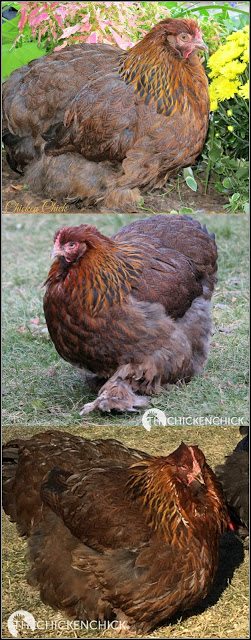WHAT IS A CROP?
A chicken's crop is a small, pocket where food is stored before continuing down the digestive tract. It is located slightly to the side of its right breast muscle. When a chicken picks up food with its beak, the tongue pushes it to the back of the mouth into its esophagus. Think of the esophagus as a long water slide that extends from the mouth all the way down the neck, emptying into the crop. Food remains in the crop until it moves into the stomach (proventriculus).
WHAT'S NORMAL AND WHAT'S NOT?
It helps to know how a normal crop should feel when learning to identify crop problems. To examine a chicken's crop, pick it up with its tail facing you and beak facing away from you, (think: hug from behind/Heimlich maneuver) then reach around to the front of its breast, slightly to the right of center. If you can't feel anything, either the crop is empty or you're in the wrong spot- usually too high up on the neck.
An empty crop stimulates a chicken's appetite and a full crop is the signal to a bird to stop eating. The capacity of a normal crop is approximately 1.5 oz (45cc), so a chicken eats in small increments often throughout the day. After eating, the crop feels swollen and slightly firm, but shrinks as food is digested.
NORMAL: the crop can't be felt when it's empty.
NORMAL: the crop feels swollen, full after having eaten.
NORMAL: the crop feels more swollen than usual, but swelling goes down overnight.
ABNORMAL: the crop feels hard and the swelling does not go down overnight. This could signal a crop impaction, which means food or other fibrous material such as straw is stuck in the crop.
ABNORMAL: crop feels squishy and the chicken's breath smells bad or sour. Sour crop, also known as thrush, crop mycosis or a yeast infection caused by a fungus.
ABNORMAL: the crop feels large and saggy or water balloon-like. Contents of the crop do not empty regularly. The crop is visibly distended and soft.
Video of Bertha- 3 year old hen with pendulous crop
WHAT IS PENDULOUS CROP?
A normal crop expands when food and water are ingested; its contents are then moved into the next section of the digestive tract and the crop shrinks back to its resting size. An abnormal crop that has lost its ability to shrink back to its resting size is known as a pendulous crop. A pendulous crop doesn't empty fully, which often results in infections, most commonly yeast (aka: sour crop/thrush/candida). The inability to digest properly causes dehydration, malnutrition, weight loss and ultimately, death. (see video, above and HERE)
CAUSES OF PENDULOUS CROP
- Genetics is a widely suspected cause of pendulous crop in chickens that are fed regularly, but nobody knows for sure.
- Advanced age may be a predisposing factor.
- Binge-eating may be a contributing factor, if not the cause.
- Nerve damage associated with the crop has been implicated as a possible cause
PENDULOUS CROP PREVENTION
- Don't breed chickens with pendulous crops
- Provide regular access to clean water and fresh feed to avoid overzealous gorging
- Monitor crop size and contents periodically, particularly in heavily feathered breeds whose feathers may obscure bulging crops
TREATMENT FOR PENDULOUS CROP
Obviously, if a vet visit is an option, consult with a vet. If detected early, in some cases a sling can be fashioned to support the sagging crop muscle.
4″ Vetrap used to create gentle, even support can help keep the crop in its proper anatomical position. Chickens with pendulous crop remain at risk for sour crop (treatment described here). The support garment may create a welcoming environment for lice and mites, so the bird should be checked regularly for parasites. A crop bra or sling will not help in all cases.
Once pendulous crop is identified, the chicken's weight, feed and water intake and droppings should be monitored closely. If the chicken loses weight or eyes become sunken, it is dehydrated and malnourished and it's time to consider end of life options.
Sources and further reading:
Poultry Digestive System
Storey's Guide to Raising Chickens
The Chicken Health Handbook
The Chicken Health Handbook, 2nd Ed.
The Merck Veterinary Manual, 10th Ed
Kathy Shea Mormino
Affectionately known internationally as The Chicken Chick®, Kathy Shea Mormino shares a fun-loving, informative style to raising backyard chickens. …Read on


shop my SPONSORS
WHAT IS A CROP?
A chicken's crop is a small, pocket where food is stored before continuing down the digestive tract. It is located slightly to the side of its right breast muscle. When a chicken picks up food with its beak, the tongue pushes it to the back of the mouth into its esophagus. Think of the esophagus as a long water slide that extends from the mouth all the way down the neck, emptying into the crop. Food remains in the crop until it moves into the stomach (proventriculus).
WHAT'S NORMAL AND WHAT'S NOT?
It helps to know how a normal crop should feel when learning to identify crop problems. To examine a chicken's crop, pick it up with its tail facing you and beak facing away from you, (think: hug from behind/Heimlich maneuver) then reach around to the front of its breast, slightly to the right of center. If you can't feel anything, either the crop is empty or you're in the wrong spot- usually too high up on the neck.
An empty crop stimulates a chicken's appetite and a full crop is the signal to a bird to stop eating. The capacity of a normal crop is approximately 1.5 oz (45cc), so a chicken eats in small increments often throughout the day. After eating, the crop feels swollen and slightly firm, but shrinks as food is digested.
NORMAL: the crop can't be felt when it's empty.
NORMAL: the crop feels swollen, full after having eaten.
NORMAL: the crop feels more swollen than usual, but swelling goes down overnight.
ABNORMAL: the crop feels hard and the swelling does not go down overnight. This could signal a crop impaction, which means food or other fibrous material such as straw is stuck in the crop.
ABNORMAL: crop feels squishy and the chicken's breath smells bad or sour. Sour crop, also known as thrush, crop mycosis or a yeast infection caused by a fungus.
ABNORMAL: the crop feels large and saggy or water balloon-like. Contents of the crop do not empty regularly. The crop is visibly distended and soft.
Video of Bertha- 3 year old hen with pendulous crop
WHAT IS PENDULOUS CROP?
A normal crop expands when food and water are ingested; its contents are then moved into the next section of the digestive tract and the crop shrinks back to its resting size. An abnormal crop that has lost its ability to shrink back to its resting size is known as a pendulous crop. A pendulous crop doesn't empty fully, which often results in infections, most commonly yeast (aka: sour crop/thrush/candida). The inability to digest properly causes dehydration, malnutrition, weight loss and ultimately, death. (see video, above and HERE)
CAUSES OF PENDULOUS CROP
- Genetics is a widely suspected cause of pendulous crop in chickens that are fed regularly, but nobody knows for sure.
- Advanced age may be a predisposing factor.
- Binge-eating may be a contributing factor, if not the cause.
- Nerve damage associated with the crop has been implicated as a possible cause
PENDULOUS CROP PREVENTION
- Don't breed chickens with pendulous crops
- Provide regular access to clean water and fresh feed to avoid overzealous gorging
- Monitor crop size and contents periodically, particularly in heavily feathered breeds whose feathers may obscure bulging crops
TREATMENT FOR PENDULOUS CROP
Obviously, if a vet visit is an option, consult with a vet. If detected early, in some cases a sling can be fashioned to support the sagging crop muscle.
4″ Vetrap used to create gentle, even support can help keep the crop in its proper anatomical position. Chickens with pendulous crop remain at risk for sour crop (treatment described here). The support garment may create a welcoming environment for lice and mites, so the bird should be checked regularly for parasites. A crop bra or sling will not help in all cases.
Once pendulous crop is identified, the chicken's weight, feed and water intake and droppings should be monitored closely. If the chicken loses weight or eyes become sunken, it is dehydrated and malnourished and it's time to consider end of life options.
Sources and further reading:
Poultry Digestive System
Storey's Guide to Raising Chickens
The Chicken Health Handbook
The Chicken Health Handbook, 2nd Ed.
The Merck Veterinary Manual, 10th Ed


































Chickens should not eat dog food- it does not have the amino acids they need for their protein requirements. The diet you’re feeding her is NOT helping her- she is undoubtedly malnourished from the diet if not the crop problem . Give her chicken feed that has been soaked in water to a mushy consistency if necessary, but none of the other things you described. Please read this article with particular attention to the “Prozyme” and diet sections:http://www.the-chicken-chic…DO try a crop bra- which is little more than an elasticized support garment. Gravity is not her friend and the bra can’t… Read more »
One of my EEs has pendulous crop. One of my favorite chickens, she comes in the house and walks with the dogs, makes herself right at home. She is a zealous eater, but also was a ball shape, which was one of the reasons we got her, so cute. Her name is Ballie Chiquita. Her crop always seemed a bit bigger than the other chickens, but I took it to be normal because she was just a big eater and it did go down. She did start to have problems one day, got into dog food and I think over… Read more »
I’m also pretty new to chicken owning. One of our chickens, we call her fried, developed a pendulous crop shortly after we got her, we separated her from the others and had her fast for 24 hours then began the regimen of yogurt and scrambled eggs twice a day, and unfiltered apple cider vinegar. This only seemed to help a little. We continued this for about 2 weeks then started adding regular feed to her yogurt diet. We also tried treating with Miconazole and an Epsom salt bath. Her crop seems to vary in size but no matter what it… Read more »
Have you read this yet? http://www.the-chicken-chic…
I am new to owning chickens and I have 7 3 month old girls. Justine (originally Justin, as I thought she was a rooster due to her size and outgoing personality) has been failing to thrive over the last week. I have been treating her for sour crop and she responds somewhat but I cannot get the infection to completely resolve. I with held food for 12 hours initially and her crop went down the next day. I then gave her yogurt (which she LOVED and very willingly ate) and since the first day, I have been giving her yogurt… Read more »